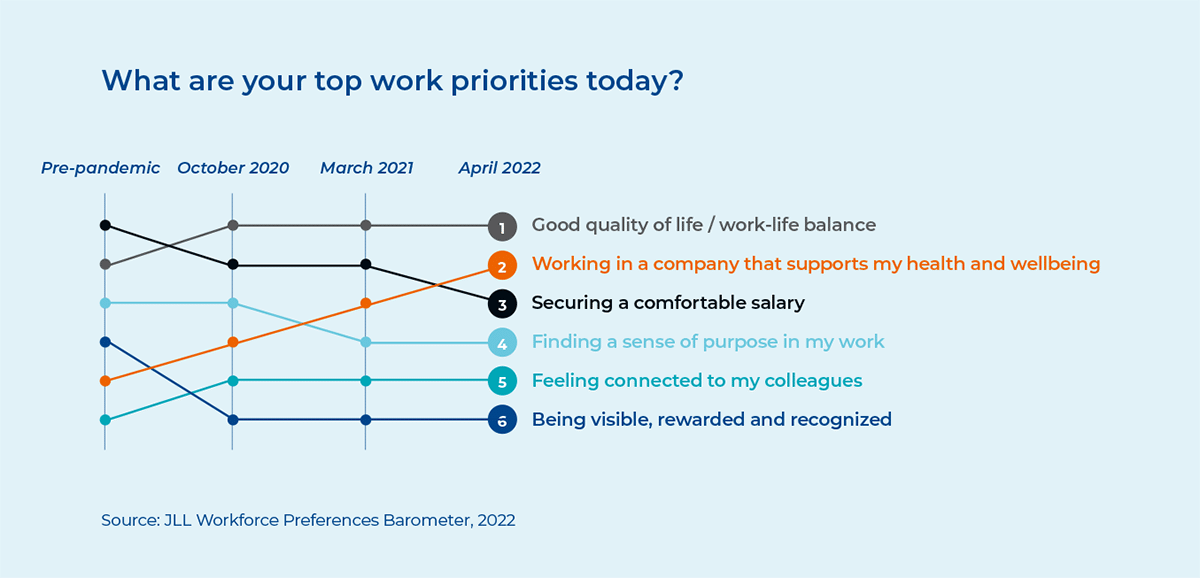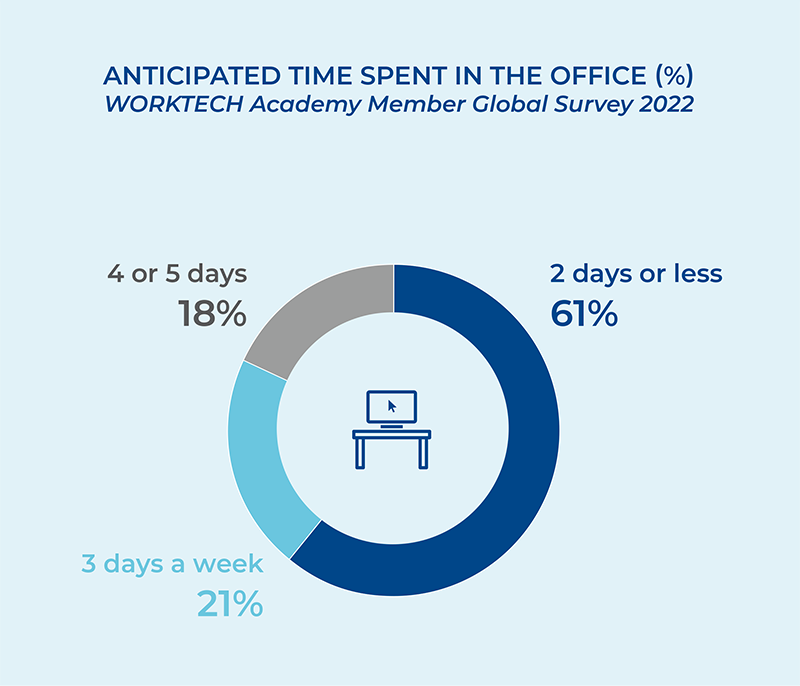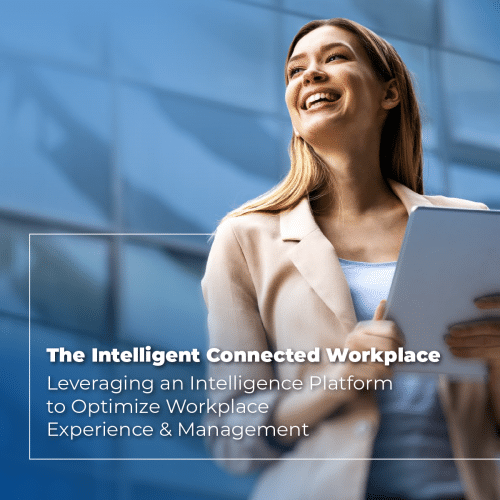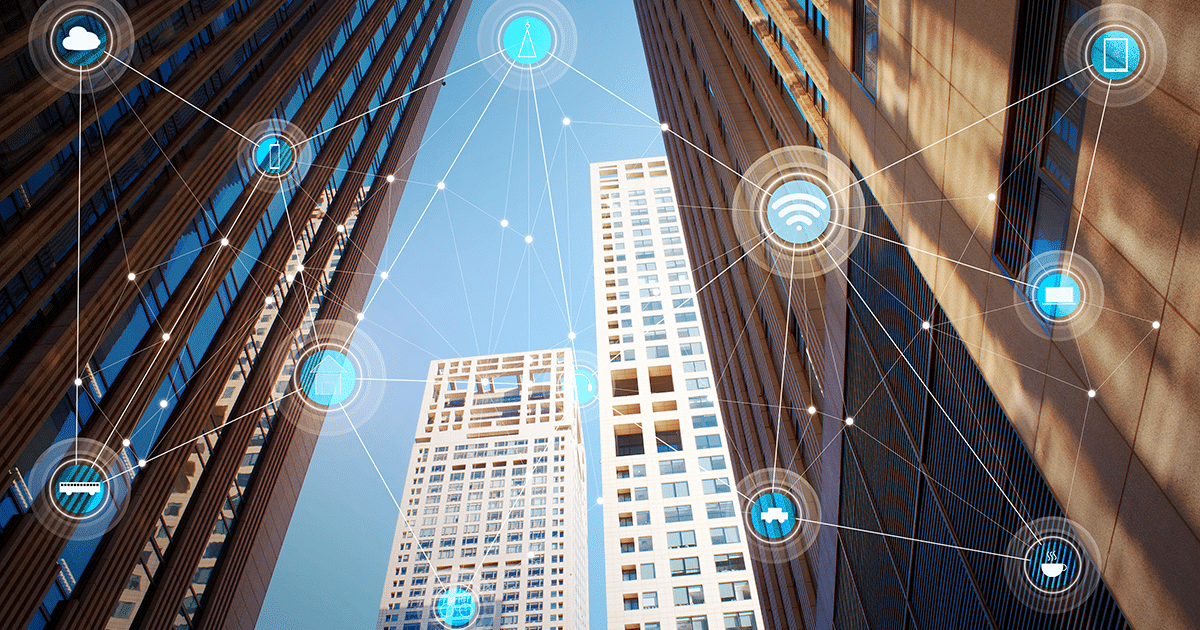CPIP (Connected Portfolio Intelligence Platform) offers unique advantages for workplace transformation and creating human-centric workspaces that positively impact employees’ health, well-being, and performance. It allows capturing data at a granular level and connecting all these data points in near real-time. Thereby enabling us to really understand how spaces are used, not as an average over a building or floor, but down to the individual meeting space or workstation at any particular time of day. It also provides powerful insights into thermal comfort, indoor air quality, the quality of lighting, and other environmental conditions. And by making this data available through user-friendly touchpoints (smartphone, other touchscreens, LED status lights, etc.), it empowers employees and gives them choice and control over their environment.
Health and vitality
The pandemic heightened people’s awareness of the indoor environment and brought a new focus on air quality. Considering that in industrialized countries we spend more than 90% of our lifetimes indoors, we now expect the buildings we use to make a positive contribution to our long-term health. Employees want to be confident that the air in their workspaces is clean. And employers are realizing that good indoor air quality is a business advantage. As JLL’s June 2022 workforce preferences barometer points out, quality of life and health and well-being have become the top priorities for office workers. “Working in a company that supports my health and wellbeing” has in fact moved up from a pre-pandemic 5th position to second position in 2022.

Source: JLL Workforce Preferences Barometer, 2022
1. Monitoring occupancy & utilization, and aligning space with purpose
Office attendance has become a factor of uncertainty. According to recent surveys a majority of knowledge workers prefer working from home for most of the week. For example, six out of ten WORKTECH Academy members globally anticipate spending 2 days or less in the office (World of Work 2022 survey). A fifth of this survey (21 per cent) opts for three days a week. Only 18% plans on spending 4 or 5 days in the office. Under these circumstances, occupancy becomes less predictable and tends to vary more widely during the week. In such an environment, smart workplace technologies – and the data derived from them – provide much-needed support.

A connected intelligence platform provides an in-depth understanding of how space is used by building occupants. Organizations can learn about occupancy levels, popular days or times of day, footfall, and desire paths. They can assess what density and desk-to-employee ratio work best in terms of space efficiency and user experience in a flexible environment. Furthermore, it also enables them to right-size – and often reduce – the office footprint. And to reconfigure their spaces based on what the data tells them about employee needs and behavior. Rather than based on guesswork. When organizations save on under-used space, they can invest in improving the remaining spaces. The goal? Fewer but better buildings, which also helps to achieve energy transition and sustainability objectives.
2. Indoor air quality and health monitoring
Poor air quality is not only harmful to physical health, but there is also growing evidence for its impact on mental health, including depression, anxiety disorder, and burnout. Poorly circulated air in buildings also impairs our cognitive function – the ability to think clearly and creatively. Carbon dioxide levels that are too high, for instance, negatively impact our ability to focus and our decision-making.
A real-time monitoring system provides reliable data at a localized level. This will quickly alert you to air quality anomalies. And it will allow you to take a data-driven, proactive approach to improving indoor air quality.
Another aspect impacting health is sufficient exercise. Office workers tend to sit down too much, which increases the risk of lower back pain, diabetes, cardiovascular disease, obesity, and even premature death (that’s why sitting is also called the new smoking). Sitting for too long also makes people less productive and less creative. Something that helps with this is a sit/stand desk. Alternating between sitting and standing prevents many complaints. Ergonomists emphasize that it is already healthy if you spend about 20% of your working time standing instead of sitting. A (built-in) sensor can track this and via a customer touchpoint, the system can give suggestions to the user.
3. Real-time workplace guidance
Another aspect of workplace transformation is real-time data to enhance the employee experience. In a flexible workplace environment, CPIP utilization data is extremely useful to assist employees in real-time. To locate team members, for example. Or for wayfinding. And to instantly book that last conference or huddle room on a busy day. All from a smartphone or other user-friendly touchscreen devices, such as room panels, or kiosks placed in high-traffic areas. Reservations systems connected to occupancy sensors can also auto-cancel reservations when a space has been booked but no one shows up.
4. Comfort and energy-efficiency
Sustainability is another pillar of the modern work environment and consequently also a focus of workplace transformation. Building IoT sensors can capture detailed information about environmental conditions, including temperature and humidity. This provides insight into the health and comfort level of various spaces, a factor that influences why some spaces are less popular than others. By overlaying this information on floor plans and dashboards, we can start improving thermal comfort while also making sure there is sufficient ventilation. Sensor data also enables us to save energy, for example, by not heating spaces that remain vacant when there are fewer people in the office. Continuous monitoring by sensors that are independent of building HVAC systems can also ensure that equipment is performing as intended. So that buildings remain comfortable and energy-efficient over time.
5. Efficient services
Data-driven insights visualized on floor plans and dashboards are essential not only to right-size the office footprint and optimize its configuration, but also to successfully plan agile workplace services in a changing office environment. Workflow-based software streamlines the process with statuses and alerts, best practices, and SLAs. Adding sensor information allows you to make the process more dynamic, enabling FM teams to act on information as it happens.
This blog post on workplace transformation is an excerpt from the June 2022 white paper on Transformative Workplace Management









